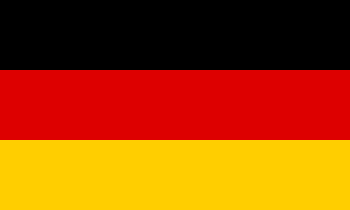
It belongs to the Indo-Germanic group of languages. It is the official language of Germany, Austria, and Liechtenstein. Some other countries, for example Switzerland, Luxembourg, Italy, and Belgium, have it as one of their official languages. The language has also spread to other countries such as USA, Canada, Argentina, Australia, South Africa, New Zealand and Mexico because of a significant German-speaking diaspora.
There are an estimated 90-95 million native speakers of this language across the world. 10-15 million consider it as their second language. Apart from that, another 75-100 million study it as a foreign language.
The first record of this language dates back to 1st century BC. However, the closest form to the present day High German came about in 6th century AD. As Germany was divided into many states with their own dialects, the language became a connecting force and most writers started using what was later termed High German in order to reach more readers. There are two main kinds of that: High German or Hochdeutsch and Low German or Plattdeutsch/Niederdeutsch. The language used extensively today has its roots in High German which is used in southern and central highlands of Germany besides Switzerland and Austria. This is the language employed in administration, literature, and education. Low German was the language of the lowlands of northern Germany. Over the years, its use has waned. Not much literature exists in this dialect and its use is relegated to some households in the region now. It has similarities to Scandinavian languages, much like High German has with English.
There are 26 letters in its alphabet, similar to the ones in English, with the addition of four other letters: ä, ö, ü and ß. The former three denote frontalization of back vowels. Before the printing press came into being, these sounds were denoted by placing an ‘e’ after the vowel. ß, pronounced ‘eszett’, denotes a sound that is a mix of ‘s’ and ‘z’, hence the name. ß is generally used in its lowercase form. However, two German-speaking countries, Switzerland and Liechtenstein, do not use the letter.
One of its unique features is the capitalisation of nouns and nominalised words. Also, compound words (two or more words joined together) are written together as one word, leading to fairly long words. For example, ‘children’s book’ in German would be one word ‘Kinderbuch’ (‘Kinder’ meaning ‘child’ and ‘buch’ meaning ‘book’).
Copyright © 2013-2024 All Rights Reserved